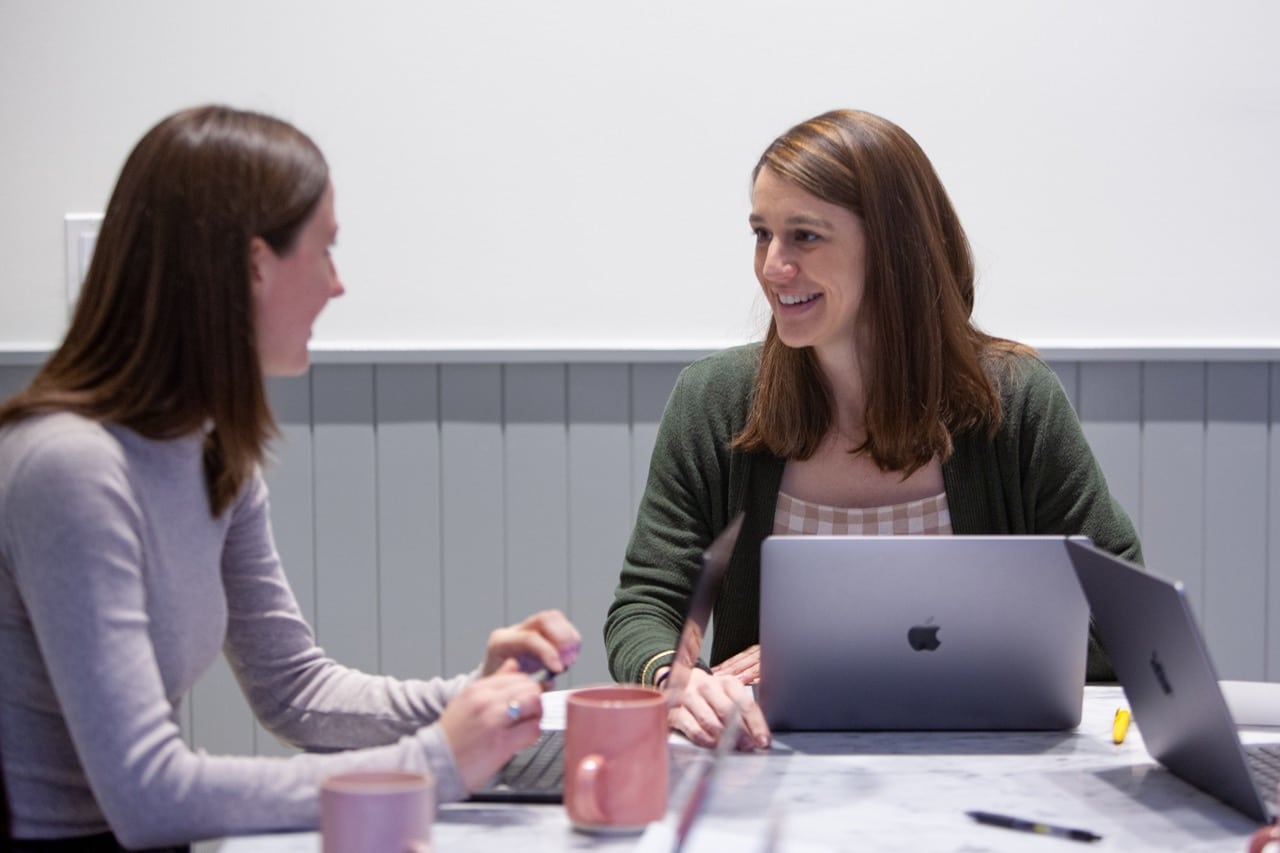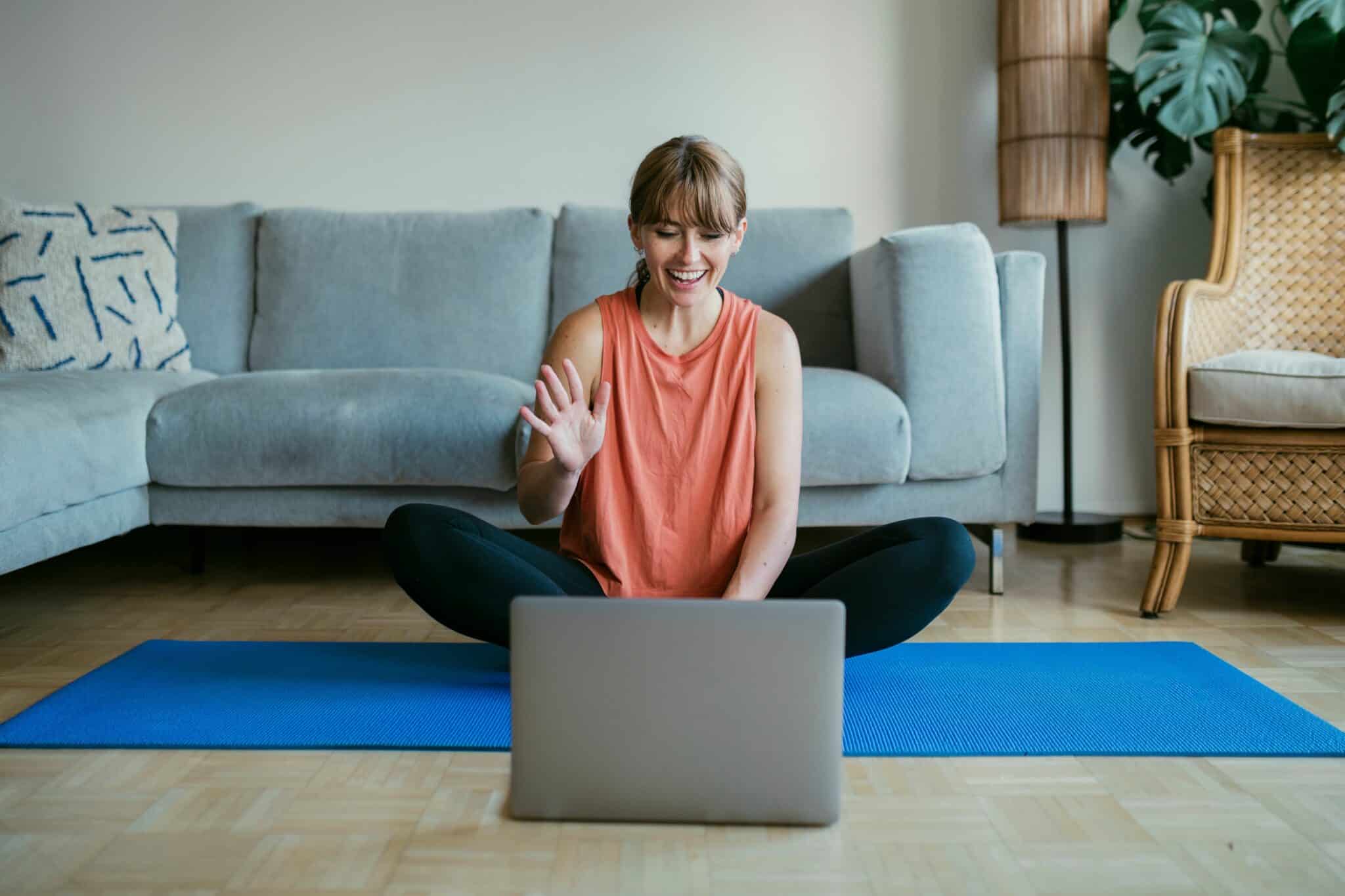The following is a transcript of our podcast conversation with Olivia Bowser. You can listen to the full episode on Spotify or Apple Podcasts.
Liberate 21 Day Wellness Challenge
Sarah
Hello and welcome to Humans Beyond Resources, an HR podcast by Reverb where we cover topics from culture to compliance. Reverb believes that every decision a leader makes reverberates throughout the organization, from hiring your first employee to training your entire workforce. We believe in building healthy, inclusive cultures that engage your team. I’m your host, Sarah Wilkins.
To wrap up May and our focus on wellness and mental health, I’m talking to Olivia Bowser, CEO and founder of Liberate, a platform providing the antidote to burnout. I met Liv at Transform earlier this year and she shared her story of why she founded Liberate and was inspired by what she’s creating. Welcome, Liv.
Liv
Thank you. I’m so excited to be here.
Sarah
Awesome. Well, let’s dive into some questions. First, I was hoping that you’d share a little bit more about yourself and your passion for wellness and what you’ve created at Liberate.
Liv
Definitely. My passion for wellness came out of my own experience, really struggling with mental health. I was always super focused on physical fitness growing up and ran the five Ks and ate the fruits and vegetables and thought that that’s what it meant to be well and to take care of myself. And then I got a job as an early employee at a high growth startup and I started to deal with a lot of stress and anxiety and isolation. And there was this whole part of my wellbeing, being my mental wellbeing, that I had never really taken care of in a proactive way. I had never really checked in with. And all of a sudden it wasn’t going well. And so I started dealing with really extreme burnout, which looks differently for everyone. For me, it was, I had an inability to sleep. I lost a lot of weight. I had anxiety tremors. I had visual impairment. Sometimes when I would have a panic attack, I wouldn’t be able to see straight. And so it, it was pretty extreme. And part of the problem was I just had no idea how to handle it. I had no tools in my mental health toolkit. I was at a total loss. And then my employer also had pretty limited resources available to help. So I ended up choosing to prioritize my mental health and I left the company, went on a whole wellness journey and I became a certified meditation and mindfulness and yoga teacher and just dove deep into these practices that I had heard could help me better manage my stress and just feel more even and calm through daily life and was very pleasantly surprised when they really had a pretty profound impact on taking my baseline from pretty anxious all the time to much more calm and capable feeling no matter what work or life threw my way. I just felt like I had all these tools that I could tap into whenever I needed them. So my goal with Liberate is to provide more accessible and approachable resources for people who are maybe dealing with similar things. Part of the problem is that you have to be really woo woo to use a lot of the resources out there, you know, to go to a 60 minute yoga class or a 30 minute meditation. And so then the rest of us just miss out on the benefits of those practices because we don’t want to, or feel like we can’t commit to that level of practice. So, you know, we really focus on making everything like tangible and digestible so that we can all add those tools to our toolkit.
Sarah
Yeah, thank you so much for sharing your story. And it’s really, like I said, inspiring to see what you created out of that with Liberate Wellness Challenge. And I loved it. You know, it’s really hard to stick to a daily practice, but it was so bite sized. And I loved the like little songs at the beginning and the breath work like towards the end of a lot of them. And just even the practice of like writing down your feelings every day was such a great like, you know, intention to do every day. And it only took, you know, a couple of minutes. It wasn’t, you know, a 30 minute hour long activity that I had to make time for in an already, you know, busy schedule.
Liv
Exactly. Yeah. And that’s kind of a common misconception of mindfulness or mental fitness as we call it, as you have to be, you know, sitting on a cushion like a monk in silence for 45 minutes. And that is one way to do it. Don’t get me wrong, but there’s also so many other ways to take like 30 seconds just to build your presence or your confidence. So I’m happy that you got something out of it.
Sarah
Yeah. Thank you. The next question I want to ask is really around how you define wellness. I think sometimes it can be, you know, defined fairly narrowly, or focused in, you know, maybe just physical or just mental or, you know, those types of things. So I’m curious how you define wellness.
Liv
Yeah, like, I mean, great point that it looks different for everyone. So for us, wellness is really holistic. It’s the state of feeling good mentally, physically, emotionally, financially. There are all different kind of prongs that come out of the overall umbrella of wellness. What we focus on at Liberate is mental wellbeing and social wellbeing, which are part of the wellness umbrella. And that for us looks like mental fitness, which is small and active ways to take care of your wellbeing on a regular basis in a consistent way. So you can compare it to physical fitness where you might go to the gym or you might go for a run or go for a walk or do yoga regularly, not because anything’s really wrong, but because you’re proactively taking care of yourself. You want to feel good. You want to feel healthy. And so you go to SoulCycle or you do whatever you do. And then for mental wellness for a long time, it was, well, you go to therapy if something drives you to go and otherwise you’re good. And so when you compare that to physical wellbeing or physical wellness or fitness, it’s well, physical therapy is kind of like therapy. It’s always valuable, but you’re usually driven to go because something hurts or something’s broken and you really need professional help. So then what are we doing that’s like our daily runs or our daily spin for our mind? And for a lot of us, it’s nothing. And so that’s the gap that like a well-being program for a team can really help fill is proactively building those muscles so that when something tears maybe it’s not as bad, you know, and maybe you’re able to feel more strong on a daily basis because you’re building those muscles over time.
Sarah
Yeah, thank you. I like that. I like the comparison around kind of going to the gym and then what are you doing for your mind and your mental wellness. So as you mentioned in your kind of intro, you were experiencing burnout, stress. I hear about those things, you know, often from all of our clients and the desire for balance. How can business leaders and individuals focus on wellness to, to reduce burnout and stress at their companies?
Liv
There’s a lot of different ways to do it. And it’s definitely important. You know, there’s some pretty tough stats about 80% of us feel stressed and burnt out every single day. There’s a new study that came out about dread in the workforce. 26% of us feel or dread going to work every day, 86% dread going to work once a month, and 50% of us dread going to work every week. So it’s just this festering of angst and anxiety over whether it’s work life or personal life, that line is pretty blurred. And so my kind of stance on that is oftentimes we don’t realize we’re burning until we’re burned out. Sometimes we don’t realize we’re falling until we’ve like hit the ground and we’re like, what just happened? Did I trip? And so it’s similar with wellbeing, where if we’re not proactively checking in with ourselves and saying, okay, how am I doing? Just like you said in the 21 day wellbeing challenge, like what are my top three emotions today? When you start to check in with yourself, you can recognize patterns and you can recognize where there’s a need that you need to support yourself with. But if you never check in with yourself, before you know it, you’re super burned out and there may not be any coming back. You may end up like me and you might feel like you have to leave the company in order to start fresh. 26% of employees have left a job for mental health reasons. 70% of millennials have left a job for mental health reasons. So the stats are pretty staggering there. And for companies, there are so many different things that you can do. Talking to your people is especially important just to really understand where they need support and what types of resources that they’re interested in. I think providing both resources at the individual and team level is really important because individualized support is great. Not everyone will feel like empowered to take advantage of those resources if it feels like there’s a stigma around mental well-being in the workplace. So when you create a normalized and open experience about mental well being, whether it’s talking about it in your all hands meetings, or bringing in speakers or doing like, team building activities that are wellness oriented, you start to embed that culture of connection and experience into the company. So people feel like, oh, it’s okay that I’m doing this for my mind, or I’m taking 30 minutes to do a mindfulness class because my boss is in here too. And so is the CEO. And it’s actually just part of our company culture. And it creates more of an uptake and engagement, which I know leaders are always worried about. You’re like, we’re going to offer this and nobody’s going to use it. But that can happen when there’s really not enough engagement or momentum around it. And so creating something that at least starts as being team oriented could help really empower employees to utilize those resources more.
Sarah
Yeah, I like that you pointed that out because I think Daniel on the last podcast and he was talking about, if the leader just has like a slight little scoff at when you’re talking about meditation that builds a stigma around it. So the leader sets a big tone for kind of how maybe these things are adopted or utilized in the workplace. Right.
Liv
Yeah. And that’s reminds me of a story the other day, my partner came home and they said that someone on their team who kind of reports to them asked if they could talk to them and they were super nervous and they pulled them aside and said, I don’t know how to tell you this, but like, I was diagnosed with anxiety disorder and last few guys having really bad panic attacks. So like, I know I dropped the ball on a lot of things, but I just, I’m having a really hard time dealing with this. And I just wanted you to know like what’s going on for me basically. And you know, my partner’s with me, so they know how to handle these things of course, but we just talked about the fact that if the leader isn’t receptive to that, like there’s so many different ways a leader can respond by being like, grab some dirt in it, or it’s fine, or you’re fine, you know, or whatever it may be. If a leader is checked in with their own wellbeing, they’re more likely able to respond in a more supportive way, which is what, you know, my partner did saying, my partner has anxiety attacks too, and it’s totally normal, let me know how I can help. I know that I don’t always know the right thing to do, but if you tell me what you need, I’m happy to support you with that. And when leaders have, I think, a greater connection to wellness, they’re able to spread that throughout their department.
Sarah
Yeah. Thank you for sharing that example. So we talked about maybe leadership being involved and making sure that you get good engagement on these wellness programs or even good engagement in general? What are some other common challenges or themes you’re seeing, you know, with employee wellness or employee wellness programs?
Liv
Yeah, there’s definitely a difficulty in terms of getting employees to commit to taking time out of the work day for wellness, especially, you know, they have a million projects to do. Like why would I take time to go do this? There’s a Zen proverb that’s like, if you don’t have 10 minutes to meditate, meditate for 20 because it makes you, you know, more productive and like able to focus more. And it shows that you really need to take a minute. And I think that that is true for the workplace as well, but maybe listening to your employees, listening to that feedback, maybe starting smaller, like you could find 15 minute sessions to do. You could find 30 minute sessions to do. You could offer it as more of a, like, instead of a virtual happy hour or trivia, maybe you do something more beneficial, like a virtual wellness class together, if you’re remote or hybrid, and find ways to easily integrate it into the workday. And then also offering people different options. Wellness is not a one size fits all. So what works for me might not work for you and same goes for everybody else. So if you can find a vendor or platform or partner that offers different ways to engage, like it’s not just on demand, it’s also live virtual classes and it’s also physical journals and it’s also digital wellbeing challenges. And I’m only using Liberate references because that’s my easiest reference point. But that way employees can kind of choose their own adventure and you’re so much more likely to have engagement in that direction versus kind of sending every employee a link to an app and saying here’s this resource, use it or don’t, and you know it won’t work for the majority of the workforce. So really trying to offer more holistic options and then use surveys and feedback to see what people like and then let that kind of dictate how you move forward.
Sarah
Yeah, that’s a really common theme and most things that I’ve been talking about with people is just asking people what they need or want, right? And in the wellness space in particular, there’s so many different products, platforms, options. There’s some really great ones, but they may not always work right for what your people need. So I think that’s such a great point, ask and find something that works. To wrap up maybe, I wanted to ask you, like if you could leave leaders with one thing that they can do to foster a culture of wellbeing and support their teams better beyond kind of what you’ve already shared. Is there anything else you would add?
Liv
This is definitely a Liberate-oriented answer, but I think it’s really fun. So I’m gonna share it. Spend the first five minutes of your calls, whether they’re one-on-ones or all hands or whatever they are with your team, connecting on a human level. And I don’t mean asking, how was your weekend? What are you doing this weekend? What’s the weather like? I mean, unique questions that make people stop and think and open up. And so you’ve experienced those firsthand in our digital challenge, but it could be things like, what’s a small success you’re really proud of in the past five years? Or if you had a superlative, like if your loved ones all played a superlative game, What superlative would they give you? Like hardest working, most funny, whatever. And there’s all these different questions. They can be more work oriented as well. Like what’s a boundary that’s getting in your way of achieving a goal. And when you, you know, at first might be kind of crickets, people might take a second to open up, but if you build that culture and habit of we’re connecting on a meaningful level, we’re getting to understand, you know, what each other is grateful for and what nighttime routines support our sleep. Like you work better together because you feel like your manager actually cares about you. You start to get more connected to your own sense of well-being and it really embeds it into the culture. So it’s a fun, easy thing that only takes a couple minutes that can start to make a big difference.
Sarah
Yeah, I absolutely love that. And I actually took some of the questions because we created a Slack channel for those of us going through the 21 day challenge ourselves and just kind of, Some of them might be like, what was your favorite, or like what’s on your bucket list to travel? And it was so fun to like hear of where other people were wanting to go. And a lot of us had like similar and we’re like family trip, you know, like it was just so fun to connect on that level and kind of step outside of just the day-to-day of the work that we’re doing. So yeah, thank you for those. I think it’s a really great way to spend, you know, just a couple of minutes getting to know each other.
Liv
Yeah, I’m glad it was helpful.
Sarah
Yeah, thank you. Well, this was super helpful. I know there’s some great tips for leaders in here and hopefully for you know individuals themselves. Yeah, the stat you shared on dread is scary so I know we all want to solve the burnout, solve the stress, dread that, you know, maybe that is happening with our employees.
Liv
It’s, you know, one step at a time, it’s not going to change overnight. But if you start to build these daily practices, you will notice a shift.
Sarah
Yeah, Absolutely. Thanks again.
Liv
Thank you.
Sarah
Thank you for listening to this episode of Humans Beyond Resources. Visit ReverbPeople.com to find free resources, subscribe to our newsletter, and connect with our team. If you haven’t already, subscribe to stay up to date on all of our upcoming episodes. We look forward to having you as part of our community.













